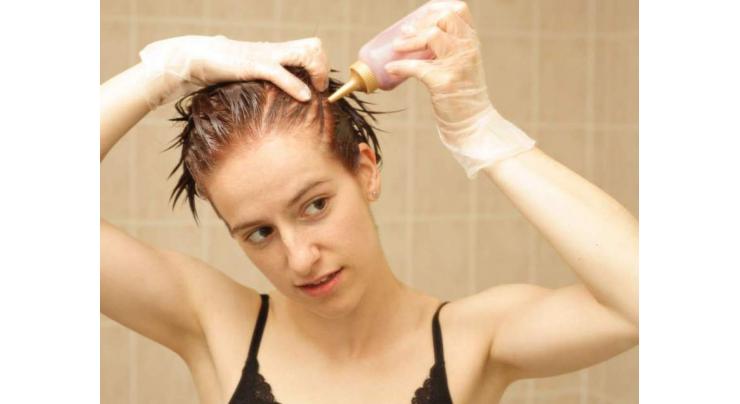
Breast Cancer: Does Hair Dye Increase Risk?
Muhammad Irfan Published December 09, 2019 | 01:18 PM

A recent study has investigated links between hair products and breast cancer
Islamabad (UrduPoint / Pakistan Point News - 09th December, 2019) A recent study has investigated links between hair products and breast cancer. The findings have caused a stir, so in this article, we put the results into perspective.Share on PinterestA new study looks at hair dye and breast cancer risk.Overall, breast cancer affects around 1 in 8 women during their lifetime.Although breast cancer incidenceTrusted Source rates among non-Hispanic white women have historically been higher than among non-Hispanic black women, in recent decades, the rate of breast cancer among black women has increased.Today, the breast cancer rates among black and white women are similar.
However, according to the authors of a new study:"[B]lack women [are] more likely to be diagnosed with aggressive tumor subtypes and to die after a breast cancer diagnosis."Scientists are working to pin down all the risk factors associated with breast cancer, and they are eager to understand why race-related disparities occur.The study, which now appears in the International Journal of Cancer,focuses on hair products.
Specifically, the researchers investigated hair dye and chemical hair straighteners, which permanently or semipermanently "relax" the hair.Hair dye and breast cancerOver the years, a number of studies have hinted at hair products' potential role in cancer.
As the study authors explain, "Hair products contain more than 5,000 chemicals, including some with mutagenic and endocrine-disrupting properties."Older studiesTrusted Source have shown that certain chemicals in hair dye can induce tumors in the mammary glands of rats.However, studies that have searched for an association between hair products and breast cancer in human populations have produced inconsistent results.The authors of the recent research, based at the National Institute of Environmental Health Sciences, set out to take a fresh look.
They decided to include hair straighteners in their analysis because earlier studies have largely ignored them. Importantly, according to the authors, these straightening chemicals "are used predominately by women of African descent."Because hair product ingredients tend to vary depending on whether the manufacturers market them to white or black women, the authors wondered if this might play a part in the disparity in breast cancer.To investigate, the researchers took data from the Sister Study.
This dataset includes information from 50,884 women aged 35-74. The scientists followed the women for an average of 8.3 years. The participants had no personal history of breast cancer but at least one sister who had received a breast cancer diagnosis.Not all percentages are equalIt is important to put these figures into perspective.
The percentages above describe relative risk, which publishers tend to focus on because the numbers appear more dramatic.For instance, studies have shown that women who drink two or more alcoholic beverages per day have a 50% higher risk of developing breast cancer.
In other words, over the course of a lifetime and compared with women who do not drink, these women are 50% more likely to develop breast cancer.However, this does not mean that they have a 50% chance of developing breast cancer.In the general population, women have a 12% risk of developing breast cancer in their lifetime.
So, if we increase this risk by 50%, that brings the risk up to 18%. In this example, the absolute risk increase is 6%, which is the difference between 12% and 18%. Although this is a significant increase, it does not have the same psychological impact as 50%.
Recent Stories

Rawalpindi woman gives birth to six babies

Kenya Army Chief Francis Ogola among nine others who died in Helicopter crash

Saudi FM’s visit positive, constructive one: FO

Hania enjoys vacations in London

IMF Officials assure support to Pakistan’s economy

Naqvi directs foolproof measures for protection of Chinese nationals

Israel carries out attack inside Iran, report US media

Saudi Assistant Minister of Defence calls on army chief

Currency Rate In Pakistan - Dollar, Euro, Pound, Riyal Rates On 19 April 2024

Today Gold Rate in Pakistan 19 April 2024

Rock-solid Ruud racks up season-leading win in Barcelona

At UN, Iran says it will make Israel 'regret' reprisals
More Stories From Health
-

Rawalpindi woman gives birth to six babies
1 hour ago -

DC calls for intensive anti-polio drive in ICT
23 hours ago -

World Hemophilia Day observed to underscore importance of providing comprehensive care
2 days ago -

Six in a family with heart on the 'right side'
2 days ago -

Diabetic disease increasing rapidly : Dr. Noor Elahi Memon
2 days ago -

World Hemophilia Day observed
2 days ago
-

ATC dismisses bail petition of doctor involved in illegal kidneys transplant
10 days ago -

Dr. Shehzad warns against deviation from WHO guidelines on anti-smoking
10 days ago -

Health activists express concerns over attempts to derail tobacco control
12 days ago -

UHS declares MBBS first prof, MS urology exam results
21 days ago -

Increased diagnostic testing for drug resistance
27 days ago -

IRD releases groundbreaking results of end TB programme
29 days ago











